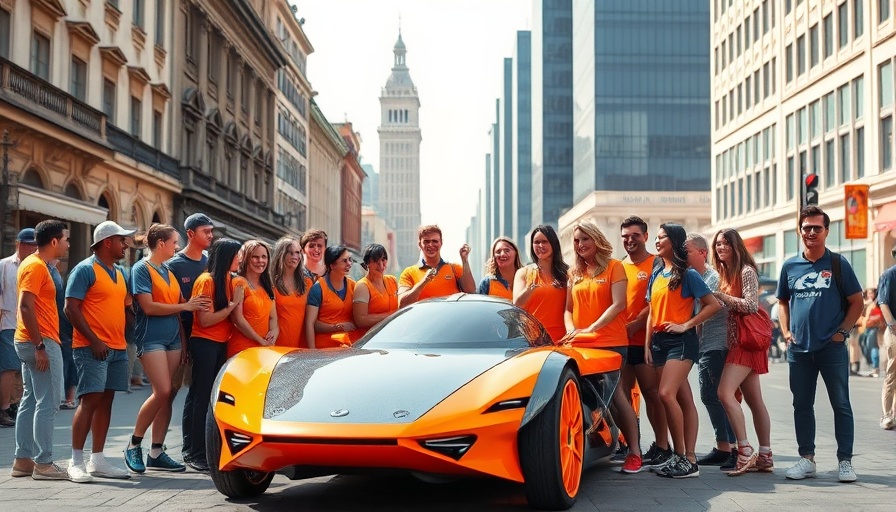
Solar-Powered Cars Illuminate Innovation in the Australian Outback
The Brunel Solar team from the Netherlands recently achieved a remarkable victory in the Bridgestone World Solar Challenge, racing 2,000 miles across the Australian Outback with their innovative solar-powered vehicle, Nuna 13. Celebrated for its unique design and efficiency, this sleek car not only embraced solar technology but also featured two fins, harnessing the wind to boost performance while minimizing energy consumption.
Racing in winter presented unique challenges, as competitors experienced 20% less sunlight than typical Australian seasons. This aspect pushed teams to elevate their ingenuity and engineering skills, resembling a modern-day Le Mans with a futuristic twist. The event, renowned for inspiring automotive innovation, served as a platform for engineers and students alike, eager to contribute sustainable solutions to pressing environmental issues.
Innovation Meets Aerodynamics: The Design Philosophy
A closer look at these solar-powered vehicles reveals designs reminiscent of aircraft carriers, optimized for maximum solar panel capacity. The undercarriage and hull-shaped sides of these cars reduce aerodynamic drag, allowing them to glide through the air with less resistance. As one organizer put it, “Fins are the flavor of the month,” highlighting the trend towards utilizing aerodynamic enhancements to improve efficiency.
For instance, the University of Michigan's Millennium vehicle showcases a fin that serves a dual purpose, enhancing stability in crosswinds while generating forward thrust similar to a sail. This ingenious design not only showcases innovative thinking but also reflects a holistic approach to vehicle dynamics in solar technology development.
The Road Ahead: Future Implications of Solar Racing
The significance of events like the Bridgestone World Solar Challenge extends beyond the thrill of racing. Bridgestone’s Vice President Hiroshi Imai emphasized the relevance of such competitions in shaping near-future technologies. As electric and hybrid vehicles continue to permeate the automotive market, pushing the boundaries of what’s possible in sustainable transportation is critical.
Insights from these competitions might inform the next generation of eco-friendly cars, embodying advancements in lightweight materials, energy efficiency, and alternative energy sources. As engineers learn to balance the demands of speed, safety, and sustainability, the evolution of these vehicles might inspire mass adoption of solar-powered cars in the mainstream market.
Real Stories from the Track: Passion and Community
Beyond the technicalities, the Bridgestone World Solar Challenge brings together a community of passionate individuals. Local students, engineers, and volunteers work tirelessly to support their teams, reflecting the collaborative spirit that defines grassroots innovation. The joyous moments shared among participants and supporters alike illustrate the emotional bonds formed through shared goals and dreams. Every success story represents the culmination of hard work, creativity, and a dash of adventure.
Emily Brooks often finds inspiration in these human connections, showcasing how innovation in technology can unite communities towards a shared vision – a cleaner, more sustainable future.
Taking the Leap into Solar Technology
The enchanting prospects of solar-powered vehicles indicate a fundamental shift in how we approach transportation. With the advancements showcased at the World Solar Challenge, there’s no denying that the future of mobility is bright, sustainable, and filled with opportunities for innovation. If you're inspired by these developments and want to explore solar-powered options in your own life, consider nurturing a growing interest in renewable energy solutions available in your community.
Being proactive about adopting solar technology can help pave the way for greater acceptance and innovation in green transportation. As stories of ingenuity and community spirit continue to emerge from events like this, we are reminded that meaningful change often starts with a single idea, a creative solution, or a community coming together to drive progress.
 Add Row
Add Row  Add
Add 




Write A Comment